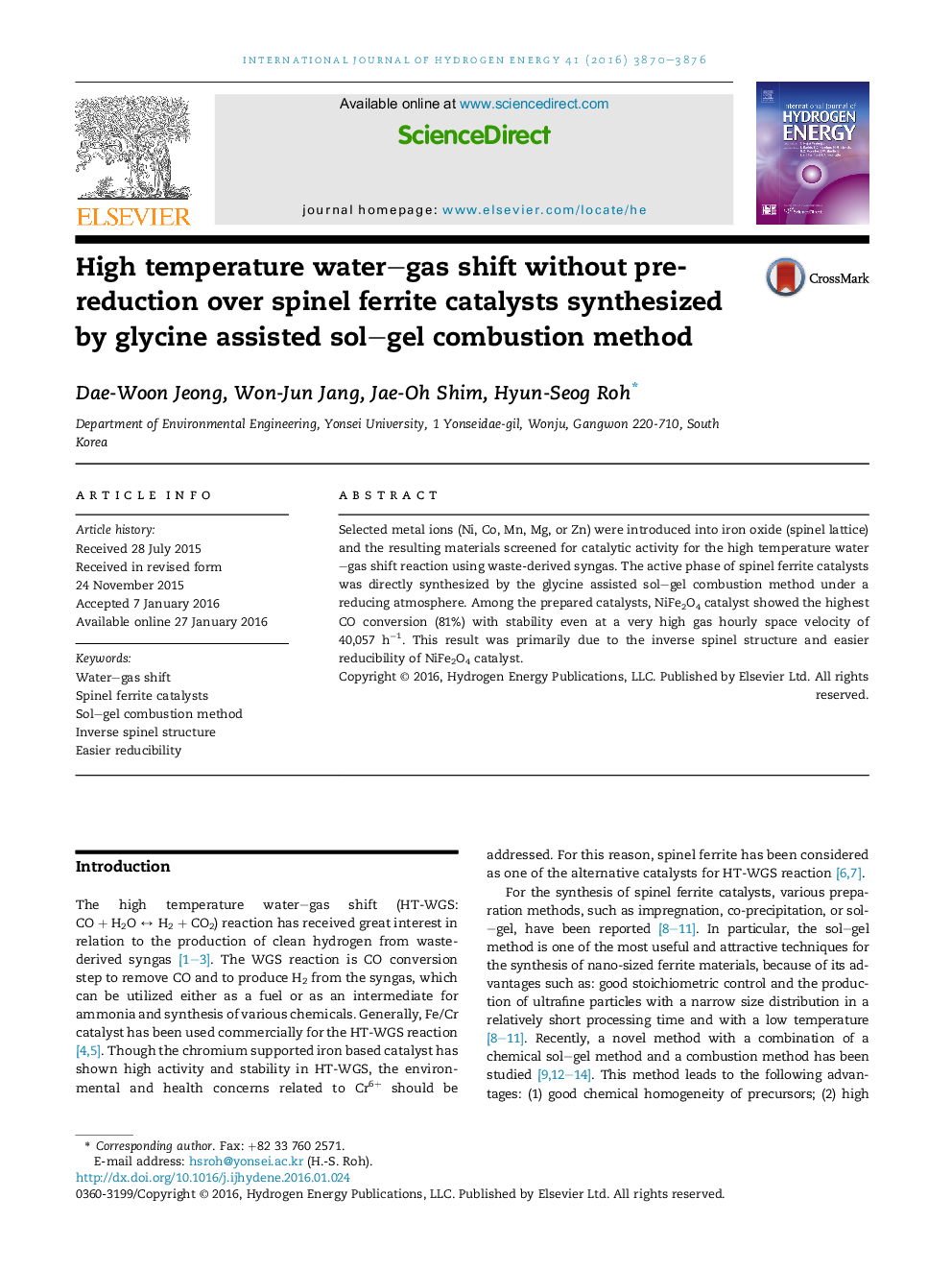| Article ID | Journal | Published Year | Pages | File Type |
|---|---|---|---|---|
| 1277916 | International Journal of Hydrogen Energy | 2016 | 7 Pages |
•AFe2O4 (A = Ni, Co, Mn, Mg, or Zn) catalysts have been applied to HT-WGS.•AFe2O4 catalysts were directly synthesized by the glycine assisted sol–gel method.•NiFe2O4 catalyst showed the highest CO conversion (81%) with stability.•This is due to inverse spinel structure and easier reducibility of NiFe2O4 catalyst.
Selected metal ions (Ni, Co, Mn, Mg, or Zn) were introduced into iron oxide (spinel lattice) and the resulting materials screened for catalytic activity for the high temperature water–gas shift reaction using waste-derived syngas. The active phase of spinel ferrite catalysts was directly synthesized by the glycine assisted sol–gel combustion method under a reducing atmosphere. Among the prepared catalysts, NiFe2O4 catalyst showed the highest CO conversion (81%) with stability even at a very high gas hourly space velocity of 40,057 h−1. This result was primarily due to the inverse spinel structure and easier reducibility of NiFe2O4 catalyst.
Graphical abstractGlycine assisted sol–gel combustion method was developed successfully to obtain active phase of spinel ferrite catalysts without pre-reduction step. NiFe2O4 catalyst exhibited the highest CO conversion among the prepared catalysts for the HT-WGS reaction without reduction step and its CO conversion was maintained without significant loss during the reaction for 100 h.Figure optionsDownload full-size imageDownload as PowerPoint slide
